Getting up at 4 a.m. to be on the river as the sun rises is normal. Most anglers will find themselves up that early at least once in their fishing careers. What’s not normal is getting off the water at 6 a.m.
I got my first taste of all-night fishing this year when guide Bryan Allison—of Steinmetz Outfitters—and Chris Cutler invited me on a three-night mousing trip in Montana. It was my first time mousing, too.
The experience impacted me enough that I’ve started mousing whenever I can. I’ve found myself staying later than normal on my local waters, waiting for it to get dark so I can throw a few casts with a mouse before calling it a night. Success can come in fits and starts, especially for beginners, but when I was with Bryan and Chris, I watched their hard work pay off. They both landed impressive fish in tough water conditions.
Afterwards, Bryan was kind enough to sit down with me and share a lot of what he knows about nighttime mousing. If you’re just starting out with fishing at night, mice, or both, then Bryan’s advice is for you and even experienced nighttime, mousing anglers will likely find some wisdom in Bryan’s tips.
Hatch Magazine: What initially intrigued you about mousing?
Bryan Allison: The possibility of finding big fish feeding more actively and catching them on top. Also, knowing that very few people do it. I’ve always enjoyed being a little outside the norm in my fishing.
More Like This
HM: Why do your primarily mouse at night instead of dusk/dawn, or even during the day?
BA: From the beginning, I assumed it was a nocturnal thing, especially for browns, so I started out that way. I’ve certainly tried it during the day but without success and I have caught only the occasional fish as the sun begins to rise. When the sky has enough sunlight to overpower the stars I find surface hits are rare.
HM: Why do you continue to mouse as consistently as you do?
BA: I love it. Mousing combines three of my favorite things in angling – solitude, big fish, and topwater action. It’s like a “final frontier” of trout fishing. You often have water all to yourself that would be crowded during the day. As the fishermen head home to bed the big fish are waking up and moving within reach.
HM: Do you think mousing gives you the best shot at landing a trophy trout? Why, or why not?
BA: Best shot? I’m not sure “mousing” itself does, but perhaps. Particularly in summer. I do believe the nocturnal element is more key than the chosen imitation prey (i.e. mouse, minnow, crayfish, etc.). I left some wiggle room there because I suspect that I might have greater success if I spent more time subsurface in my presentation. But I like my hits on top and therefore choose to stay with mice the majority of the time. I’ve caught many fantastic fish during the day over the past 20 years. However, hours logged fishing at night make up only a fraction of those fished during the day, and yet mousing accounts for my largest browns taken on any kind of gear day or night.
HM: What’s the best advice you have for those new to mousing?
BA: You can see better in the dark than you think you can. Use artificial light sparingly (to tie a knot, check your footing, etc.) and even then only a dull red light to preserve your night vision. Trust your instincts guided by senses other than sight and don’t question your first impression – whether that’s when to pick up a cast, when to set the hook, etc. Everyone looks for a “formula.” There is no such thing.
HM: What’s your go-to setup for mousing?
BA: The specific rod and length change from year to year as I experiment. But what become standard for is an 8-weight rod, a floating glow fly line light charged, a heavy furled nylon leader (like Cutthroat Leader’s 50-inch Big Bug Leader) and a short length of stout tippet (16 to 20lb mono). And carry a net that will hold the fish you hope to catch. I’ve had to chuck my net in the bushes and improvise because it was too small. That’s not what you want to be doing in the dark with a fish of a lifetime.
HM: What basic presentation or technique should anglers new to mousing (and especially mousing at night) employ?
BA: The typical presentation for mousing is down-and-across. But you can't really do it incorrectly. And mouse presentation isn't pretty. The gist of it is that you should do everything the opposite of what you'd do with a dry fly: smack it down, drag it, most often against the current. But you can also try a presentation where you move your mouse with it or across the current.
HM: What’s the most important skill someone new to mousing should master?
BA: This may sound corny, but being able to lift your rod tip and catch your fly in your hand is essential. It’s a motion that has to be done blindly and intuitively. But it will keep you moving along the river bank, keep your line management in order, and let you keep your fly free of weeds while checking for tippet abrasion. The length of darkness is shorter than you think on those summer nights and the more time you can spend covering ground with the mouse in the water the more takes you will have. Being able to reach and grab your fly in a single motion will keep you effective. It is the bridge to many tasks – from checking or changing a fly to maneuvering around stream bank obstacles to initiating short casts.
Mousing at night is nearly completely foreign, but it’s an absolute blast. Head out one night before summer ends and give it a shot.




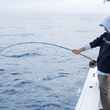











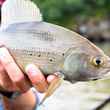
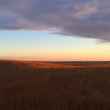



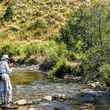
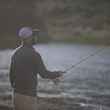




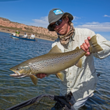


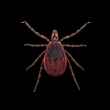
Comments
Kaleb M replied on Permalink
Mousing upstream is pretty affective too, since mice and other small rodents aren't capable of swimming upstream. A good method is to have two people standing one behind the other, with the person up front casting upstream while pulling in line to keep up with the current, and maybe drag across the stream like a mouse getting pushed to the other side of the bank. After however long, you and your partner switch positions and keep at it. Works like a charm here in Michigan!
Kaleb M replied on Permalink
You should try mousing upstream! Works like a charm!
Pages